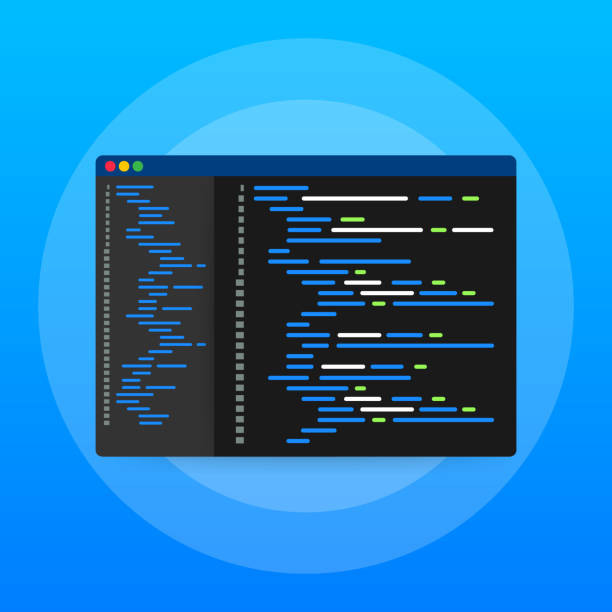
Articles
How to Document Code Best Practices for Growing Businesses

Understanding how to document code best practices is crucial for any organization that relies on software development. Proper documentation not only enhances the overall efficiency of your team but also ensures long-term maintainability of your projects. In this blog post, we will delve into various aspects of code documentation and offer valuable insights into achieving excellence in this area.
We will explore essential factors such as boosting developer productivity, improving technical writing skills, and utilizing visual elements in documentation. Additionally, you'll learn about managing enterprise-level documentation systems and leveraging collaborative platforms for better accessibility.
After this thorough guide on how to document code best practices proficiently, you will be furnished with ample understanding to significantly augment your squad's productivity and task results.
Importance of Code Documentation
How to document code best practices is crucial for small-to-medium-sized businesses, as it can significantly increase developer productivity and maintainability of the product. Good documentation leads to increased dev productivity, as confirmed by GitHub's 2023 State of the Octoverse report. Let's dive into why code documentation matters and how it benefits your business.

Boosting Developer Productivity
Time is of the essence when running a business, so maximizing developer productivity can lead to cost savings. When developers have access to well-documented code, they spend less time deciphering what each line does and more time writing new features or fixing bugs. According to GitHub's research, projects with good documentation saw an average 18% increase in developer productivity, which translates into significant cost savings for your company.
Faster onboarding
New team members can quickly get up to speed with existing projects thanks to clear explanations and examples provided in the docs.
Easier collaboration
With proper code documentation in place, developers from different teams or even external contributors can understand each other's work better, reducing friction during collaborations.
Better decision-making
Comprehensive information about how certain components function helps engineers make informed decisions when planning future updates or enhancements.
Enhancing Maintainability
Maintainable software is like a well-oiled machine, it runs smoothly without frequent breakdowns that require costly repairs. By investing in quality code documentation practices now, you'll save yourself headaches (and dollars) down the road. Here are some ways thorough docs contribute to improved maintainability.
Reduced technical debt
When code is documented, it's easier to identify and address potential issues before they snowball into larger problems.
Fewer errors
Proper documentation helps developers understand the intended behavior of a piece of code, which can prevent them from introducing bugs when making changes or updates.
Smoother transitions
If someone leaves your team or moves on to another project, well-documented code ensures that their knowledge doesn't walk out the door with them. Good documentation makes it simpler for newcomers to carry on the work.
In short, investing in solid code documentation practices not only boosts developer productivity but also enhances the maintainability of your software, making it a win-win situation for small-to-medium-sized businesses looking to grow and scale efficiently.
The value of code documentation is paramount for any software engineering venture to be successful and last. By following best practices in documenting code, developers can ensure that their projects remain maintainable while also boosting productivity.
How to Document Code Best Practices
Writing code is an art, and documenting it should be no different. To ensure high-quality code documentation, software engineers should follow best practices that make their masterpieces easy to understand and maintain. Dive into some of the established approaches for how to document code best practices.
Keeping Content Simple Yet Concise
The first rule of thumb on how to document code best practices is to "say what you mean, simply and directly." Avoid using jargon or complex language that could confuse readers who may not have the same level of expertise as you do. Instead, aim for clarity by providing straightforward explanations and examples where needed.
Remember: if a developer can't understand your documentation easily, they'll likely struggle with your code too.
Regularly Updating Documents
Taking ownership of your docs means keeping them up-to-date like a well-tended garden, pruning unnecessary information frequently while nurturing new content as required. When making changes to the codebase (even minor ones), updating relevant documentation should be part of the process; this ensures future developers won't waste time deciphering outdated instructions or hunting down missing pieces.
Schedule regular "documentation reviews" within your team to keep everyone accountable for maintaining current documents. Use version control systems like Git, so you can track changes made over time and collaborate effectively with other contributors.
Incorporating these best practices will help create robust code documentation, ultimately leading to increased productivity among developers and smoother sailing throughout the development process. So go ahead, document like a pro, and watch your team thrive.
For any organization that desires to remain competitive, it is imperative to have the capability of producing high-quality technical writing material to generate more effective problem-solving tutorials and instructions.
Improving Technical Writing Skills
As an SME, having developers who can communicate proficiently via technical documentation is critical. To help your team improve their technical writing skills, Google offers a free tech writing course that covers the fundamentals of creating effective and engaging content.
Tutorials for Learning Purposes
Tutorials are learning-oriented materials designed to teach users how to perform specific tasks or understand certain concepts. They should be clear, concise, and easy to follow. When documenting code best practices in tutorials, make sure they provide step-by-step instructions with relevant examples.
How-to Guides for Problem-Solving
In contrast to tutorials, how-to guides focus on problem-solving by addressing common issues faced by developers when working with your software. These guides should offer practical solutions and actionable steps that enable readers to resolve their problems quickly and efficiently.
The Google tech writing course also introduces an intuitive framework known as "The Four Types of Documentation." This framework categorizes documentation into four types:
- Tutorials: Learning-oriented material focused on teaching new skills or concepts.
- How-To Guides: Problem-solving-oriented material aimed at providing solutions.
- Explanation: Understanding-oriented material meant for clarifying complex ideas.
- Reference Materials: Information-oriented resources containing detailed data about specific topics.
This simple yet comprehensive approach has been widely adopted across various open-source projects and enterprises due to its universal applicability in improving code documentation quality.
Improving technical writing skills is an important step in creating effective and accurate documentation. Utilizing visual elements can help to further enhance the clarity of your written work, making it easier for readers to understand.
Utilizing Visual Elements in Documentation
An image can say more than a thousand words, and that is especially true when discussing code documentation. Incorporating visual elements like diagrams can significantly enhance understanding and make your documents much more engaging for readers.
Benefits of Including Diagrams
Utilizing diagrams on how to document code best practices provides easier comprehension, faster onboarding, better collaboration, and maintainability.
Complex concepts are often easier to grasp when presented visually, making diagrams essential for illustrating relationships between different components or processes. New team members can quickly get up-to-speed with well-documented visuals, reducing their learning curve and boosting productivity.

Clear visuals facilitate communication among team members, ensuring everyone is on the same page regarding how various parts of the system interact. When changes occur within the codebase, updating relevant diagrams helps keep the documentation current while providing valuable context during future updates or bug fixes.
Managing Enterprise-Level Documentation Systems
As your business grows, you might find that traditional MS Word or Excel formats just don't cut it anymore for managing enterprise-level documentation systems. Fear not. There's a better way to keep track of all those crucial code docs: Markdown-based solutions.
Not only are they more efficient and easier to maintain, but they're also searchable through internal search engines, making life much simpler for everyone involved.
Markdown-based Solutions for Better Searchability
Markdown, a lightweight markup language with plain-text formatting syntax, has become increasingly popular among developers and technical writers alike. The reason? It allows you to create well-structured documents using simple text editors while ensuring compatibility across various platforms and devices.
Plus, since these files can be easily indexed by internal search engines like GitLab or GitHub, finding the information you need is as easy as pie.

To ensure that code documentation is accessible and useful for a broad range of stakeholders, it is imperative to employ collaborative platforms with proper indexing systems. This includes not only current and future developers but also technical writers, UX designers, researchers, customer support team members, and sales engineers.
To achieve this level of accessibility in your code documentation, you need to have proper indexing systems in place as well as collaborative platforms that make it easy for teams to work together on maintaining high-quality documents.
Importance of Proper Indexing
The first step towards creating an accessible documenting code environment is ensuring that all relevant information can be easily found by anyone who needs it. Proper indexing helps users quickly locate the content they are looking for without having to sift through countless pages or files.
Some tips for effective indexing include creating a clear table of contents with descriptive headings and categorizing content into logical sections based on their purpose or function. Additionally, add tags or keywords related to the topic at hand so search engines can better understand what each document covers. The last is to maintain consistency across naming conventions throughout your entire documentation system.
Conclusion
In the end, knowing how to document code best practices is essential to guarantee that groups can team up on activities productively and proficiently. By taking the time to hone technical writing skills for developers, enhance documentation with visual elements, manage enterprise-level documentation systems, and utilize collaborative platforms for maintaining high-quality documents; organizations can build an effective framework of documented code best practices that will help them succeed now and into the future.
Sign up now for a free 7-day with Trainual and scale your business!
Similar Blog Posts







